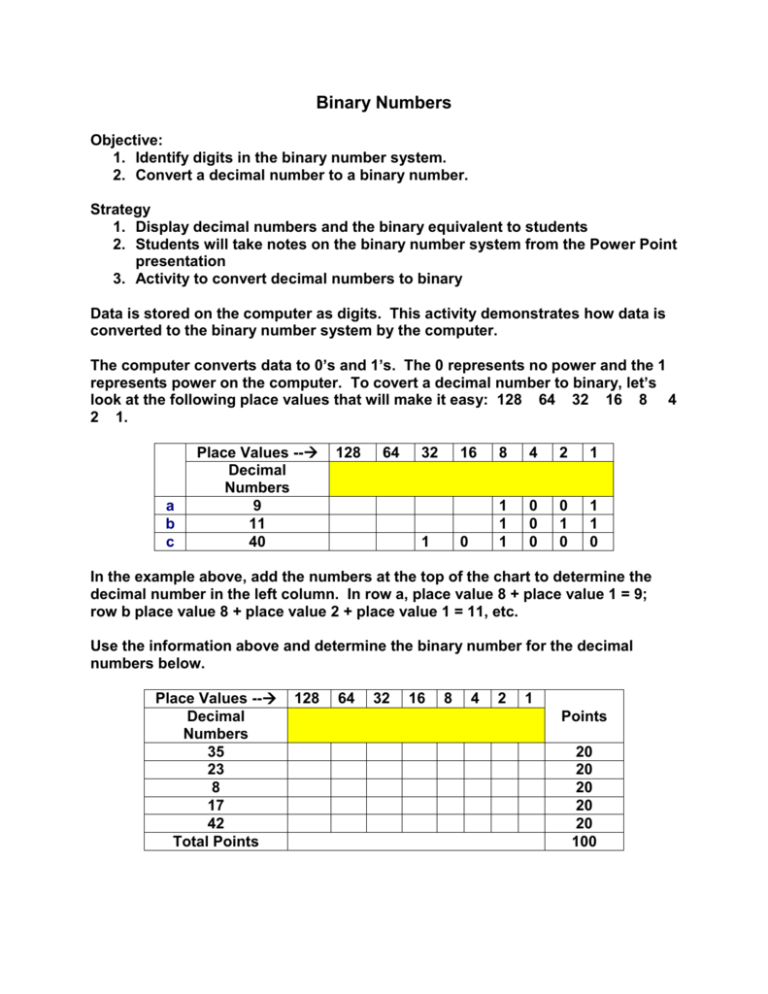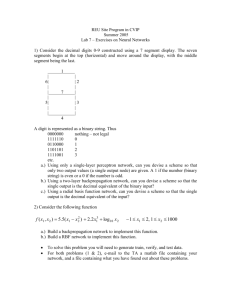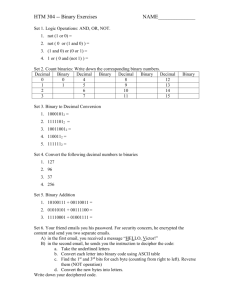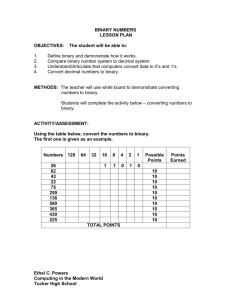Binary Numbers.1
advertisement

Binary Numbers Objective: 1. Identify digits in the binary number system. 2. Convert a decimal number to a binary number. Strategy 1. Display decimal numbers and the binary equivalent to students 2. Students will take notes on the binary number system from the Power Point presentation 3. Activity to convert decimal numbers to binary Data is stored on the computer as digits. This activity demonstrates how data is converted to the binary number system by the computer. The computer converts data to 0’s and 1’s. The 0 represents no power and the 1 represents power on the computer. To covert a decimal number to binary, let’s look at the following place values that will make it easy: 128 64 32 16 8 4 2 1. a b c Place Values -- Decimal Numbers 9 11 40 128 64 32 1 16 8 4 2 1 0 1 1 1 0 0 0 0 1 0 1 1 0 In the example above, add the numbers at the top of the chart to determine the decimal number in the left column. In row a, place value 8 + place value 1 = 9; row b place value 8 + place value 2 + place value 1 = 11, etc. Use the information above and determine the binary number for the decimal numbers below. Place Values -- Decimal Numbers 35 23 8 17 42 Total Points 128 64 32 16 8 4 2 1 Points 20 20 20 20 20 100




